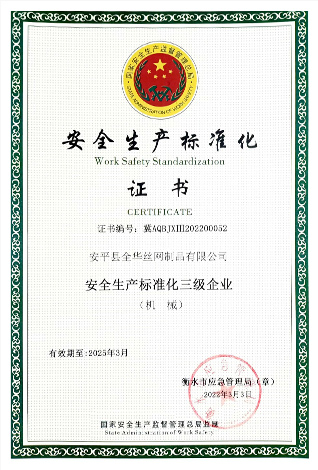ജുലാ . 20, 2024 02:21 Back to list
Exploring Top Manufacturers of Gabion Structures for Sustainable Watershed Management Solutions
Gabion Structures in Watershed Management A Sustainable Solution
In recent years, the growing challenges posed by soil erosion, flooding, and habitat degradation have prompted the development and implementation of innovative engineering solutions. Among these, gabion structures have emerged as a popular choice for watershed management. Gabions, which are wire mesh cages filled with rocks or other materials, serve multiple purposes, including erosion control, water management, and habitat restoration. This article explores the importance of gabion structures, the role of manufacturers, and the benefits they bring to watershed management.
Understanding Gabion Structures
Gabion structures are versatile and durable elements used in civil engineering. They can be designed in various shapes and sizes to suit specific environmental needs. Typically, these structures are placed in strategic locations within a watershed to stabilize riverbanks, reduce sedimentation, and manage water flow. By creating barriers and retaining walls, gabions help to redirect water, minimizing the risk of flooding and erosion.
One of the key features of gabions is their flexibility. Unlike traditional concrete structures, which can crack and weaken over time, gabions adapt to changes in the environment. They allow for the natural movement of water and sediment, thus fostering a more resilient ecosystem. Additionally, the use of natural materials in gabion construction contributes to their sustainability, aligning with contemporary environmental goals.
The Role of Manufacturers
Manufacturers of gabion structures play a crucial role in the successful implementation of watershed management solutions. These companies not only produce the gabion cages but also provide technical expertise and consultation on design, installation, and maintenance. They often work closely with environmental engineers and hydrologists to create tailored solutions that meet the specific needs of a watershed.
gabion structure watershed manufacturers

A significant aspect of gabion manufacturing is the range of materials available. While traditional gabions use stones, manufacturers may offer alternatives such as recycled materials, which can enhance sustainability further. The importance of sourcing high-quality materials cannot be overstated, as it directly impacts the durability and effectiveness of the structures.
Benefits of Gabion Structures
Gabion structures offer several advantages that make them an appealing option for watershed management. Firstly, they are cost-effective. The materials used in gabion construction are generally inexpensive compared to other engineering solutions like concrete or steel. This cost efficiency allows for wider application, particularly in areas with limited budgets for environmental projects.
Secondly, gabions promote ecological benefits. They can create diverse habitats for local wildlife, as the gaps between the rocks allow for vegetation to grow and stabilize the soil. This not only enhances biodiversity but also improves water quality by filtering pollutants.
Moreover, the installation of gabion structures can be relatively quick and straightforward, which is particularly beneficial in urgent situations like flood prevention. Their modular nature allows for scalability small projects can be expanded into larger ones as needed, providing adaptability in watershed management approaches.
Conclusion
Gabion structures have proven to be an effective and sustainable solution for addressing the challenges faced by watersheds. The contributions of manufacturers, in both design and material selection, are vital to the success of these projects. As communities and governments seek innovative ways to manage their natural resources, gabions represent a practical option that balances environmental needs with economic constraints, paving the way for healthier, more resilient ecosystems. Embracing gabion technology is not just about managing water; it’s about fostering a sustainable future for our landscapes and habitats.
-
HESCO Gabion Baskets for Coastal Erosion Prevention
NewsAug.22,2025
-
Longevity and Durability of River Rock Gabion Walls
NewsAug.22,2025
-
How to Integrate Gabion 3D Walls in Urban Planning
NewsAug.22,2025
-
Reno Mattress Gabion Applications in Civil Engineering
NewsAug.22,2025
-
How to Install Wire Mesh for Gabion Baskets Properly
NewsAug.22,2025
-
Best Materials for Filling a Chain Link Gabion
NewsAug.22,2025
-
Wire Mesh Thickness Impact on Gabion Wall Load Bearing
NewsAug.12,2025






